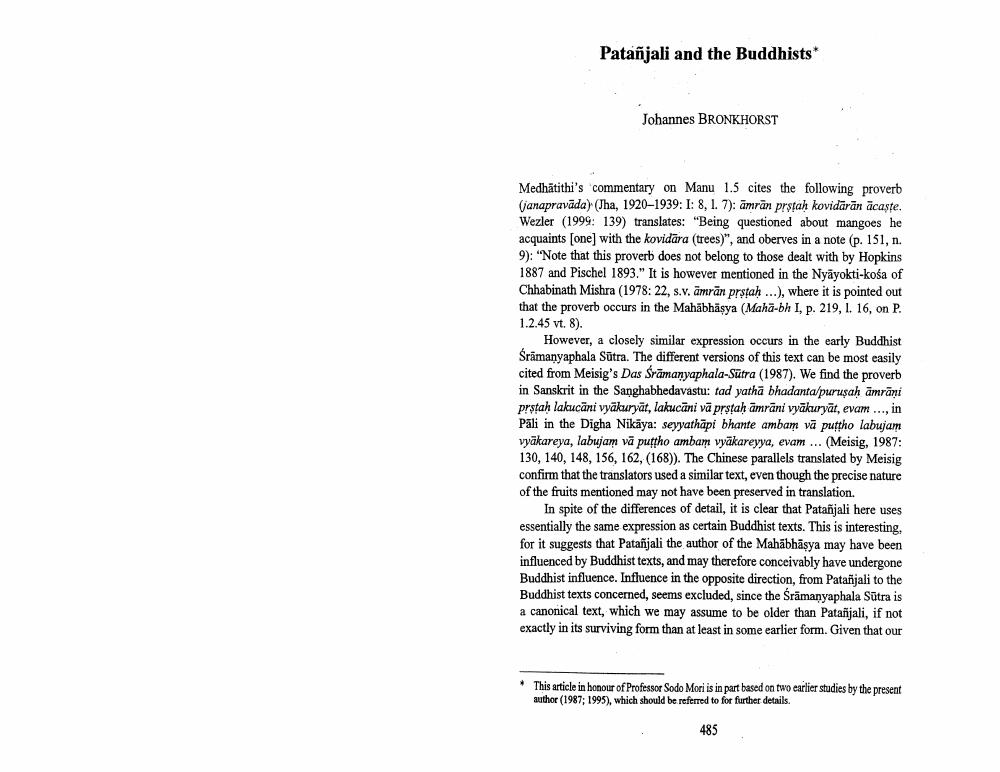Book Title: Patanjali And Buddhists Author(s): Johannes Bronkhorst Publisher: Johannes Bronkhorst View full book textPage 1
________________ Patañjali and the Buddhists* Johannes BRONKHORST Medhätithi's commentary on Manu 1.5 cites the following proverb (janapravāda) (Jha, 1920–1939: I: 8. 1. 7): amran prstah kovidarān acaste. Wezler (1999: 139) translates: "Being questioned about mangoes he acquaints (one) with the kovidāra (trees)", and oberves in a note (p. 151, n. 9): "Note that this proverb does not belong to those dealt with by Hopkins 1887 and Pischel 1893." It is however mentioned in the Nyāyokti-kośa of Chhabinath Mishra (1978:22, s.v. amrān prstah ...), where it is pointed out that the proverb occurs in the Mahābhāsya (Maha-bh I, p. 219, 1. 16, on P. 1.2.45 vt. 8). However, a closely similar expression occurs in the early Buddhist Śrāmanyaphala Sūtra. The different versions of this text can be most easily cited from Meisig's Das Srāmanyaphala-Sutra (1987). We find the proverb in Sanskrit in the Sanghabhedavastu: tad yatha bhadanta/purusah āmrāni prstah lakucāni vyakuryāt, lakucāni vā prstah amrāni vākuryāt, evam ..., in Pāli in the Digha Nikāya: seyyathāpi bhante ambam vā puttho labujam vyäkareya, labujam vā pusho ambam vyäkareyya, evam ... (Meisig, 1987: 130, 140, 148, 156, 162, (168)). The Chinese parallels translated by Meisig confirm that the translators used a similar text, even though the precise nature of the fruits mentioned may not have been preserved in translation. In spite of the differences of detail, it is clear that Patañjali here uses essentially the same expression as certain Buddhist texts. This is interesting, for it suggests that Patañjali the author of the Mahabhāsya may have been influenced by Buddhist texts, and may therefore conceivably have undergone Buddhist influence. Influence in the opposite direction, from Patañjali to the Buddhist texts concerned, seems excluded, since the Srāmanyaphala Sūtra is a canonical text, which we may assume to be older than Patañjali, if not exactly in its surviving form than at least in some earlier form. Given that our This article in honour of Professor Sodo Mori is in part based on two earlier studies by the present author (1987; 1995), which should be referred to for further details. 485Page Navigation
1 2 3 4
